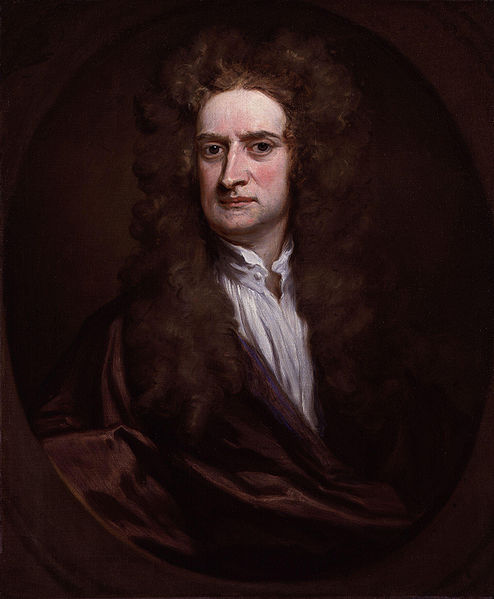In physics, action at a distance is the concept that an object's motion can be affected by another object without being in physical contact with it; that is, the non-local interaction of objects that are separated in space. Coulomb's law and Newton's law of universal gravitation are based on action at a distance.
Glazed frame, containing "Delineation of Lines of Magnetic Force by Iron filings" prepared by Michael Faraday
Jean-Antoine Nollet reproducing Stephan Gray's “electric boy” experiment, in which a boy hanging from insulating silk ropes is given an electric charge. A group are gathered around. A woman is encouraged to bend forward and poke the boy's nose, to get an electric shock.
Sir Isaac Newton was an English polymath active as a mathematician, physicist, astronomer, alchemist, theologian, and author who was described in his time as a natural philosopher. He was a key figure in the Scientific Revolution and the Enlightenment that followed. His pioneering book Philosophiæ Naturalis Principia Mathematica, first published in 1687, consolidated many previous results and established classical mechanics. Newton also made seminal contributions to optics, and shares credit with German mathematician Gottfried Wilhelm Leibniz for developing infinitesimal calculus, though he developed calculus years before Leibniz.
Portrait of Newton at 46, 1689
Newton in 1702 by Godfrey Kneller
A replica of the reflecting telescope Newton presented to the Royal Society in 1672 (the first one he made in 1668 was loaned to an instrument maker but there is no further record of what happened to it).
Illustration of a dispersive prism separating white light into the colours of the spectrum, as discovered by Newton






